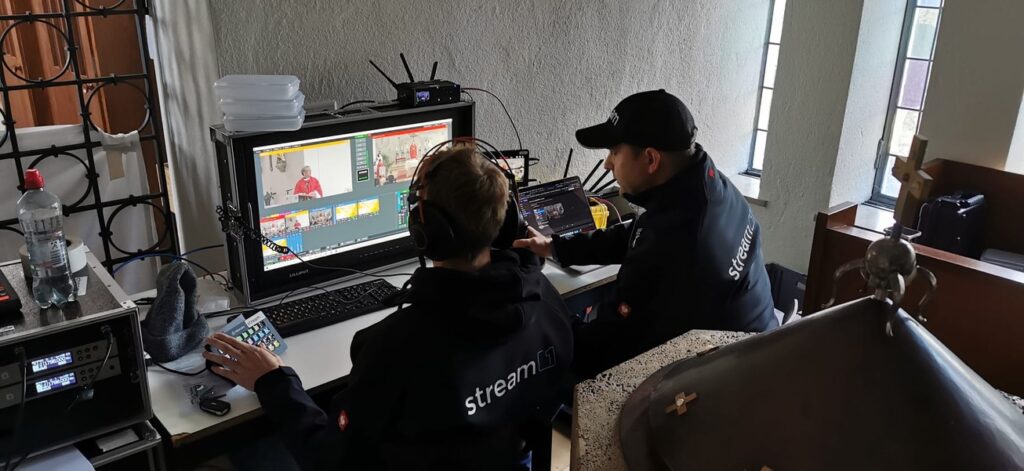Hybrid events are becoming increasingly popular. Whether it’s a class at university, a church service or more and more companies and organisations are discovering the world of livestreaming for themselves. Whereas with a classic livestream of an event, the live director mixes the stream directly on site, the so-called remote director has recently become more and more established. In this article, we explain what remote control actually is, how it works and for whom it is suitable.
What is Remote Direction?
Remote direction refers to the direction of an event from a distance. The director of the livestream is not on site at the event, but mixes picture and sound from another location.
How does remote directing work?
As the name suggests, the director accesses the individual sound and image signals remotely and mixes them into a final result. The cameras and microphones at the event transmit their recordings via the Internet to Remote Regie, where the director creates the final product. Only then is the final image played out to the digital viewers. In addition to image and sound, the remote director can also insert belly bands, slides or films.
What are the advantages and disadvantages?
We don’t want to hide the fact that remote control has a clear and obvious disadvantage: The livestream technician is not on site at the event. Therefore, he cannot react immediately to unexpected events or problems and does not get to experience the general atmosphere.
Therefore, remote direction is not suitable for one-off events. For a successful remote direction, the director should have seen the conditions on site at least once. The advantage becomes all the more obvious as soon as you plan regular livestreams. Be it product presentations directly from a shop, the weekly church service or a lecture series.
The advantage of remote directing lies above all in the low personnel costs. As a rule, one technician is sufficient for remote control – and he or she can theoretically be located anywhere in the world. Usually, technology is permanently installed on site or the staff on site set up the mobile technology on their own. In this case, the on-site staff do not have to take care of anything – except switching on the camera. Remote control livestreaming is therefore particularly suitable for people with little livestreaming experience. Especially events where no trained streaming staff is present benefit from remote directing. This allows us to produce livestreams at manageable costs.
As Stream1, we regularly accompany live events via remote control. If you are looking for a livestream service provider for remote direction, we are your partner. Call us: 0049 89 41 41 453 10




